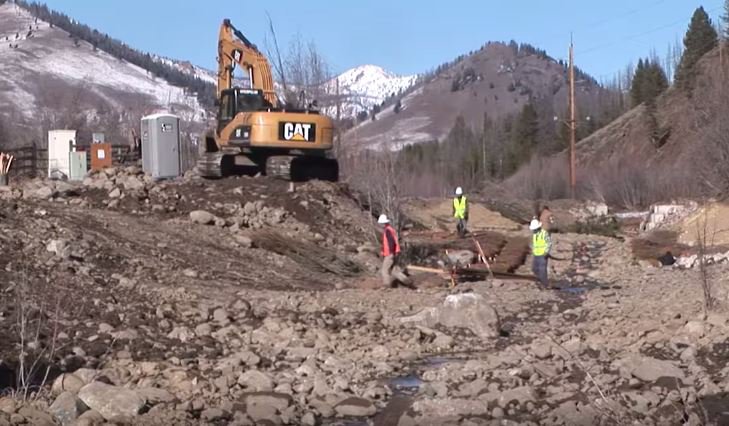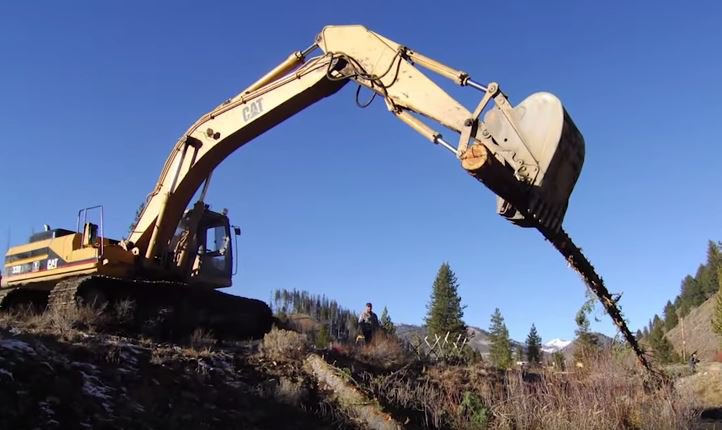Once Dredged For Gold, The Yankee Fork is Making a Comeback
- September 10, 2015
- John Harrison

The Council got a history lesson at its September meeting in Eagle, Idaho. Representatives of a multi-disciplinary team working to rebuild spring Chinook salmon and steelhead runs in the Yankee Fork of the Salmon River reported on their progress repairing the damage done by decades of dredge mining. The progress is impressive.
Danny Stone, policy analyst for the Shoshone-Bannock Tribe, told the Council that riparian vegetation is rebounding. “We are starting to see the bottom of the channel take shape with aquatic vegetation,” he said.
“With the help of our partners, we are improving instream complexity with the placement of large wood and rocks to create a more complex habitat that has ripples and pools and deep runs, trying to make this into more of a natural-looking stream,” Stone said. “We’ve taken a uniform channel and turned it into something that is much more complex, with the kind of features that an anadromous fish would be looking for when it comes back for spawning.”
The Yankee Fork holds a notable place in Idaho history. In 1866, one year after the end of the Civil War, a group of Montana prospectors explored the upper Salmon River Basin looking for placer mining opportunities and found a likely candidate in an as-yet unnamed large tributary. After several fruitless weeks they left without finding gold, but they left behind a name that sticks to this day. Everyone in the party was a Yankee.
Four years later, others found gold found on Jordan Creek, a Yankee Fork tributary, and soon a mining district was organized. Miners swarmed into the area, and a town was platted called Bonanza City. By 1879 the population had grown to 2,000. The placer deposits were rich but, dug primarily by hand, soon played out. Later, a small dredge had some success, but the dredge that became a fixture of the river, a monster at 112 feet long and 54 feet wide, was completed in 1940 and operated until 1952. In 1966, its owners donated it to the U.S. Forest Service as a museum.
While the Yankee Fork was rich with gold, it also was rich with spring Chinook salmon, steelhead, bull trout, and westslope cutthroat trout. Dredge mining completely rechanneled about six miles of the lower Yankee Fork, left hundreds of tailings piles scattered along the river bank, widened and straightened the river channel, and left the river bottom littered with boulders and cobble – and very little gravel for salmon spawning. Dredging also cut off fish access to the historic floodplain and riparian zone.
Outside of the dredged area, the Yankee Fork holds great promise as a place to boost Snake River spring Chinook and steelhead, which are ESA-listed species, and so for the last four years the multi-disciplinary effort has been underway to restore habitat and rebuild fish runs in the river. Members of the team include Trout Unlimited, Shoshone-Bannock Tribes, Bureau of Reclamation, U.S. Forest Service, Bonneville Power Administration, Idaho Office of Species Conservation, Idaho Department of Fish and Game, Idaho Department of Parks and Recreation, and property owner J.R. Simplot Company.
The work is underway on several fronts, including creating and maintaining resting spots in the river for juvenile fish by strategically placing large dead trees in the river to slow the flow, restoring natural river channel characteristics and floodplains, and improving aquatic habitat by redistributing dredge tailings piles from the floodplain.

So few trees were left along the river bank that in some places trunks like this one were brought to the river.
Links:
U.S. Bureau of Reclamation Yankee Fork Rehabilitation Project
U.S. Forest Service Yankee Fork project
Trout Unlimited Yankee Fork Side Channel Project
J.R. Simplot Company: Restoring an Idaho Gem: Yankee Fork of the Salmon River



